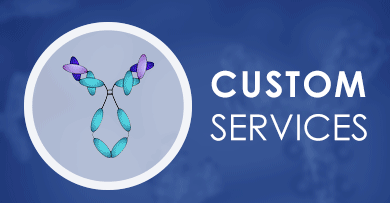+ Filter
 Loading...
Loading...

IL17Rd
 Loading...
Loading...Anti-IL17Rd ProductsBackground
Anti-IL17Rd Products
-
- Species Reactivity: Human
- Type: Rabbit IgG
- Application: ELISA
- Anti-Mouse IL17RD Immunohistochemistry Kit (VS-0525-XY3498)
-
- Species Reactivity: Mouse
- Target: IL17RD
- Application: IHC
Can't find the products you're looking for? Try to filter in the left sidebar.Filter By Tag
More Infomation
Our customer service representatives are available 24 hours a day, from Monday to Sunday. Contact Us
For Research Use Only. Not For Clinical Use.
Background
Interleukin-17 receptor D (IL-17D) also known as Interleukin-17 receptor-like protein, is a member of interleukine-17 recepter family. IL-17RD functions as a feedback inhibitor of fibroblast growth factor mediated Ras-MAPK signaling and ERK activation. It may inhibit FGF-induced FGFR1 tyrosine phosphorylation, regulate the nuclear ERK signaling pathway by spatially blocking nuclear translocation of activated ERK By similarity, and mediate JNK activation and may be involved in apoptosis. IL-17RD is found expressed in the neopallial cortex, rhombic lip and dorsal regions of the myelencephalon and in the frontal nasal process. IL-17RD is also expressed in the commissural plate and septal area of the forebrain and in the hippocampus, lens and optic cup. In the oral region, IL-17RD is expressed in the tongue and in the mesenchyme of the first branchial arch. It is also expressed in the developing inner ear. IL-17RD interacts with both IL-17R-Myc and IL-17RB-Myc. Both the intracellular and extracellular domains of IL-17RD interact with IL-17R. IL-17R forms a heteromeric complex with IL-17RD. Experiment results indicate that IL-17RD is able to affect IL-17R localization, suggesting that these two molecules are colocalized and associate with each other within cells. The fact that IL-17RD Delta ICD is unable to mediate IL-17 signaling but functions as a dominant-negative form indicates that the intracellular domain of IL-17RD is pivotal. In addition, IL-17RD interacts with the IL-17R downstream molecule TRAF6. It has been proposed that the IL-17RD intracellular domain interacts with IL-17R and TRAF6 to deliver the downstream signal.
Protein class
Disease related genes, Human disease related genes
Predicted location
Intracellular, Membrane (different isoforms)
Single cell type specificity
Cell type enhanced (Peritubular cells, Late spermatids, Early spermatids, Microglial cells, Breast myoepithelial cells)
Immune cell specificity
Not detected in immune cells
Cell line specificity
Cell line enhanced (AF22, AN3-CA, NTERA-2, SH-SY5Y)
Interaction
Interacts with MAP3K7 (By similarity). Self-associates. Interacts with FGFR1, FGFR2 and phosphorylated MAP2K1 or MAP2K2. Associates with a MAP2K1/2-MAPK1/3 complex.
Molecular function
Receptor
More Types Infomation

